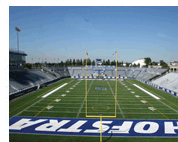A Core Team Operates On And Off The IceApr 16, 2012Posted by james
In New York, hockey always gets the short stick among sports fans and the media. But hockey shouldn’t be dismissed simply as “that game from Canada.” Hockey is so different from the other sports—a composite of strategy, positioning, quick reactions and hard hitting at high speed—with teamwork a critical component for success.
After the 1994 Stanley Cup win, the New York Rangers enjoyed several additional successful years before collapsing as quickly as a frozen puck can shatter the glass that surrounds a rink. Then the NHL lockout season came along, forcing all teams to scramble to develop new competitive strategies under a new league salary cap.
Up to this time, the Rangers liked to sign aging stars for big bucks, only to have many of them flounder on the Madison Square Garden ice. But, just before the lockout, when Ranger management anticipated that a shutdown of the league would occur, they developed a strategy that has reaped rewards this season.
The Rangers began to concentrate more on the draft, selecting talented players with much upside from colleges and the junior leagues. They also started to mold these players at the minor league level at the AHL’s Hartford Wolf Pack (now known as the Connecticut Whale). Management and coaches instituted a team concept that had to be followed by every skater in the organization. Each group of skaters—three forwards and two defensemen—now functions as a “core unit of five.” From the first line through the fourth line, from the first defensive pair to the third pair, a skater in each core unit must support the others in the unit on offense and defense.
After the lockout, the new system became a key component of the next training camp. The “core unit of five” continues to be stressed daily with the Rangers and with its AHL affiliate.
The success of this strategy is evident on the ice. The AHL team, which has been one of the top-tier franchises in its conference for 10 years, has become even more successful during recent years. Its players easily transition into the Rangers’ on-ice style of play when they are called up to the NHL. After a long drought, the Rangers have made the playoffs during the last several years. This season, with the team clinching first place in the NHL Eastern Conference, the Rangers again are a serious contender for the coveted Stanley Cup.
The core unit philosophy instituted by the Rangers can be adapted for business. By strategically creating core units among your employees, you can empower your people to cover for each other, communicate clearly with each other and advance, or defend, the business together. Properly coached, the core units in your business, similar to those the Rangers place on the ice, will remain focused on game-day objectives and will keep the ultimate prize clearly in sight.
JCM









